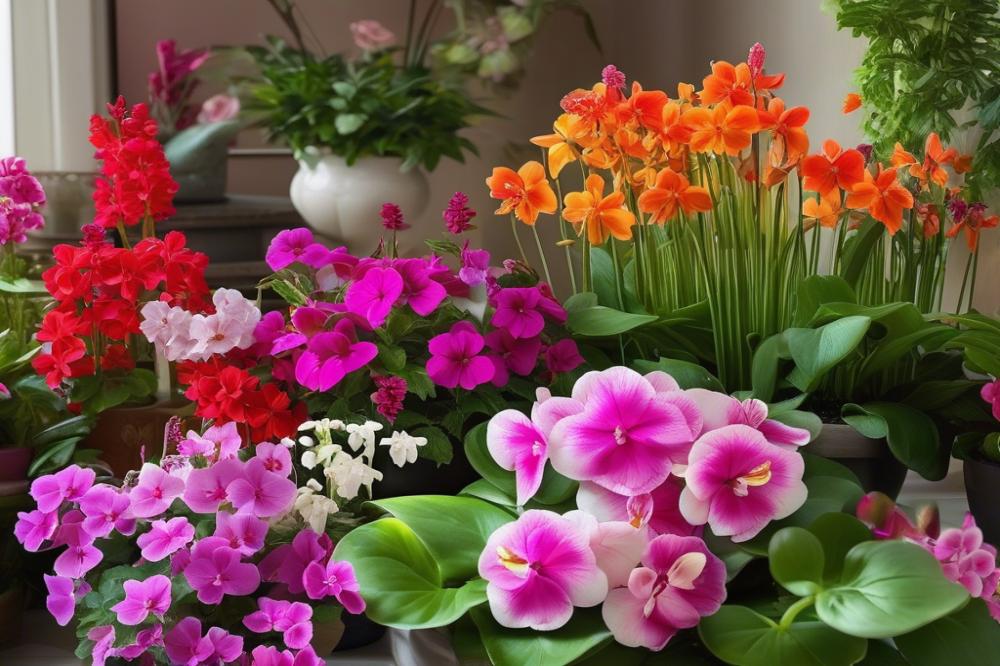Introduction
Growing and cultivating roses can be an exciting journey for any gardener. Many find joy in these vibrant blooms, which can add beauty to any space. Whether you have a small backyard or a spacious garden, roses bring charm and color. Venturing into the world of rose seeds opens a door to numerous possibilities. With many rose varieties available, each seed provides a unique chance to produce spectacular flowers.
Choosing to Grow Roses from Seeds, rather than buying mature plants, offers benefits that are often overlooked. Seed propagation allows gardeners to explore different species and create hybrids from your own plants. It invites creativity and personal expression into your home gardening journey. It can also be more affordable in the long run. While planting roses from seedlings provides instant flowers, starting with seeds brings rewarding challenges.
Understanding the process of Rose Seed Germination is crucial to successful cultivation. It requires patience and care, much like nurturing any living thing. Many gardening tips will aid you as you embark on this adventure. With the right knowledge, you can enjoy the process of watching your seeds sprout into thriving plants. The satisfaction derived from growing roses from seeds is unmatched, as a single seed can lead to a garden full of breathtaking blooms.
Understanding rose seeds

Rose seeds come in various types. Each type has its own unique characteristics. Some seeds may produce blooms that are round and full, while others give rise to thinner and longer petals. Selecting the right seeds can greatly impact your garden’s aesthetics. In addition, the growth rate can differ among rose varieties, affecting how quickly you see beautiful blooms.
Differences Between Hybrid and Heirloom Rose Seeds
When it comes to understanding rose seeds, recognizing the difference between hybrid and heirloom varieties is essential. Hybrid seeds often produce colorful and disease-resistant flowers. However, some gardeners prefer heirloom seeds due to their history and traditional beauty. Heirloom roses can showcase a delightful range of sizes and shapes, making them appealing for outdoor gardening. planting roses from heirloom seeds may take more time, but the charm they bring to any garden can be worth the wait.
The Importance of Selecting the Right Rose Varieties for Home Gardening
Choosing the right rose varieties is crucial for successful home gardening. Not all seeds thrive in every climate or soil type. Local conditions, such as sunlight and moisture, play a big role in plant growth. By considering these factors, you can find seeds that will flourish in your garden. Additionally, rose care is easier with varieties suited for your environment. Always remember to read gardening tips specific to the rose varieties you’re interested in. Success in seed propagation often depends on ensuring you pick compatible plants for your space. Ultimately, taking the time to select the correct seeds will lead to a stunning and vibrant rose garden.
Collecting and Preparing Rose Seeds

How to Collect Seeds from Existing Roses
Finding rose seeds can be a rewarding task. Start by choosing fully mature rose hips from existing plants. These are the fruit of the rose, usually appearing after blooming. Wait until they change color, typically turning from green to orange or red. Harvest them by cutting the hips from the stem. You can also pick them directly off the bush. Give the rose hips a gentle squeeze; if they feel soft, they are likely ready for collection. After gathering the hips, store them in a cool, dry place until you’re ready to extract the seeds.
Tips for Cleaning and Storing Rose Seeds
Cleaning the seeds is essential for their future growth. Use a sharp knife to carefully cut open the rose hips. Inside, you will find small seeds surrounded by a gelatinous coating. This coating can inhibit growth. Rinse the seeds in water to remove the gel. After cleaning them, spread the seeds out on a paper towel. Allow them to dry completely before storing. Keep the seeds in a cool, dark place to maintain their viability. An airtight container works best for long-term storage. Label your containers with the rose varieties to track them easily during planting.
Importance of Seed Stratification for Successful Germination
Stratification is an important process for rose seeds. It mimics the natural winter conditions that seeds need for germination. Without this process, seeds might not sprout. To stratify, place cleaned seeds in a damp paper towel or peat moss. Put them in a plastic bag and store in the fridge for about 6 to 12 weeks. This cold treatment helps break dormancy and prepares them for planting. After the stratification period, they are ready for sowing. This small step can significantly improve your chances of success in seed propagation.
Planting Roses from Seeds

Ideal Time and Conditions for Planting Rose Seeds
Timing is crucial when planting roses from seeds. Aim for early spring. The temperatures should be mild, ideally between 70-75°F. This warmth encourages the seeds to germinate. Rose seeds need light, so do not bury them too deeply. Choose a day when the soil is moist but well-drained. Optimal conditions lead to better results in plant growth.
Step-by-Step Guide on How to Plant Rose Seeds
Begin with fresh rose seeds. Soaking them in warm water for 24 hours can enhance germination. After soaking, prepare seed trays or pots filled with seed-starting mix. Lightly press the seeds into the soil surface. A thin layer of soil can cover them. Next, water the soil gently to avoid disturbing the seeds. Place the trays in a warm, sunny location. Covering them with plastic can create a greenhouse effect. Monitor the soil moisture regularly. A consistent environment is key to successful seed propagation.
The Importance of Soil Type and Outdoor Gardening Techniques
Choosing the right soil type makes a significant difference. Opt for loamy soil, which retains moisture but drains well. This balance promotes healthy root development. When preparing for outdoor gardening, consider adding organic matter like compost. It enriches the soil and provides essential nutrients. Using mulch around the seedlings can help retain moisture and suppress weeds. Rose care involves regularly checking for pests and diseases. Healthy plants are more resilient and bloom beautifully. Remember, patience is vital. Not every seed will sprout, but with care, many will thrive in your home gardening journey.
Seed Propagation and Care

growing roses from seeds can be both thrilling and challenging. Start by choosing high-quality rose seeds, as this will greatly affect your results. Make sure to research the different rose varieties available to find the one that suits your garden the best.
Techniques for Successful Seed Propagation
Proper seed propagation requires careful preparation. Stratification is one important technique to mimic the natural conditions seeds need to germinate. Soak the rose seeds in water for about 24 hours before planting them. After soaking, place them in a mix of damp paper towels inside a plastic bag. Store this bag in the refrigerator for several weeks. This process increases the chances of successful germination.
After the stratification period, select a suitable container filled with potting soil. Make small holes about half an inch deep in the soil, and gently place the seeds in each hole. Cover them lightly with soil. Water gently to moisten the soil without washing the seeds away. Remember to keep the soil consistently moist, but not soggy.
Watering and Fertilization Tips for Young Rose Plants
Watering young rose plants is critical to their health. Use a spray bottle or gentle watering can to provide moisture without overwhelming tiny plants. Ideally, water them once a day until they establish strong roots. As the plants grow, gradually reduce the frequency of watering to encourage deeper root growth.
Fertilization is also essential for robust development. Once the seedlings reach a height of about two inches, you can begin feeding them with a diluted liquid fertilizer. Look for one that’s specifically designed for young plants. This will give them the nutrition they need to thrive.
Importance of Sunlight and Temperature Control for Plant Growth
Sunlight plays a vital role in the overall health of your roses. Young plants require at least 6-8 hours of direct sunlight each day. Position the containers in a sunny spot, like a window or on a patio. Keep an eye on the temperature, as roses prefer a warm environment. Aim for a daytime temperature of around 70°F and slightly cooler at night.
Maintaining the right conditions is crucial. If nights are too cold, consider moving young plants indoors or using covers. This will protect them until they are strong enough for outdoor gardening. Monitoring light and temperature will set the stage for successful plant growth.
Transplanting Seedlings
When and How to Transplant Seedlings into the Garden
Transplanting seedlings can be rewarding, but timing is critical. Wait until your seedlings have grown at least two sets of true leaves. This usually takes about 8 weeks after sowing. It’s best to move them outdoors when the danger of frost has passed. Choose a cloudy day or transplant in the evening to reduce shock. Carefully remove each seedling from its container, keeping the roots intact. Dig a small hole in the garden and place the seedling inside, covering the roots gently with soil. Do not pack the soil too tightly around the plant.
Choosing the Right Location for Planted Roses
Selecting the right spot is essential for healthy rose growth. Most rose varieties thrive in full sunlight, ideally at least six hours a day. The soil should have good drainage to prevent waterlogging, which can harm the roots. Look for a location sheltered from strong winds to protect your delicate plants. Consider the overall layout of your garden, as roses should complement the other plants surrounding them.
Care Tips for Transplanted Roses during Their Establishment Phase
Careful attention during the establishment phase is vital for your young roses. Water them regularly, but avoid overwatering. Soil should be consistently moist but not soggy. Mulching around the base can retain moisture and suppress weeds. Fertilize with a balanced rose care product about a month after transplanting. This encourages healthy plant growth and blooming potential. Be vigilant for pests that may target new plants. Inspect your roses regularly and take action as needed. With patience and proper care, your seedlings will flourish in their new home.
Maintaining Healthy Rose Plants
Caring for rose plants requires attention and effort. Healthy plants produce beautiful blooms that enhance any outdoor gardening space. First, unique rose care practices play a vital role in the ongoing health of your roses. Regular watering helps the soil remain moist but not soggy. Aim for about an inch of water each week, especially during hotter months. Mulching around the base can reduce water evaporation and keep the roots cool.
Pest management is crucial for your roses. Aphids, spider mites, and beetles can wreak havoc on plants, so scouting for these pests regularly is wise. Use insecticidal soap or neem oil as part of your treatment plan. These solutions are effective and minimize harm to beneficial insects. Always read labels carefully and follow instructions for application.
Fungal diseases can be a challenge too. Black spot and powdery mildew are common threats. To combat these problems, consider spacing your roses adequately. Good airflow around the plants can discourage disease. If you notice any signs of trouble, act quickly. Prune the affected areas without hesitation and avoid wetting the foliage while watering.
Gardening Tips for Seasonal Care
Seasonal adjustments are essential for long-term success. Each season brings unique challenges and opportunities. During spring, fertilizing helps kickstart plant growth. A balanced fertilizer provides the nutrients needed for healthy development. Be careful not to over-fertilize, as this can harm your roses.
In summer, regular deadheading is important. Trimming spent flowers encourages new blooms. Be diligent about checking for pests and diseases. Protect your plants from the harsh sun by ensuring adequate hydration. A little shade can do wonders in high temperatures.
As fall arrives, prepare your roses for winter. Pruning dead stems and leaves strengthens the plants. Covering the base with mulch helps insulate the roots from frost. Additionally, some rose varieties may require extra protection, so research what works best for the types you are growing.
During winter, focus on maintenance rather than planting roses. Remove any remaining leaves to prevent disease. Inspect for any potential issues. Even in dormancy, keeping an eye on your plants is beneficial.
With care and attention, home gardening can lead to thriving rose plants. Remember to celebrate the small victories along the way. Gardening is a journey, and every step counts toward cultivating stunning blooms from your rose seeds.
Final Thoughts on Growing Roses from Seeds
Growing roses from seeds offers a fulfilling experience for gardeners. The process allows you to witness the beauty of new life emerging from those tiny rose seeds. Patience is essential, but the reward is incredible. With every bloom, you’ll appreciate the time and effort you invested. This practice not only expands your garden but also builds your skills as a gardener.
Exploring different rose varieties can bring excitement to your gardening journey. Each type of rose has its own charm, fragrance, and color. You might discover hybrids that you didn’t even know existed. Each new plant can add a personal touch to your landscape. Experimenting with various gardening methods can further enhance your success. Techniques like stratification or using various soils can yield surprising results.
Cultivating roses from seeds is more than a task; it’s a journey filled with joy and discovery. You meet challenges, gain knowledge, and reap the rewards. Every step of the process contributes to a sense of accomplishment. So, gather your tools and start planting roses! Remember, every garden is unique, and so are the stories behind each flower. Embrace the process and enjoy the beauty you create. Happy gardening!



